TV buying guide: Which TV display is best for you?
At that place are so many types of Tv set that the heed boggles when looking for a new 1. There's plenty of displays to cull from in the market, but what practice all these technologies mean, what are the pros and cons of each one, and what do you demand to wait out for when searching for a new TV?
We've assembled a simple guide to give you an understanding of what these terms mean so you're armed with the info you need to know when purchasing your side by side TV.
LCD LED
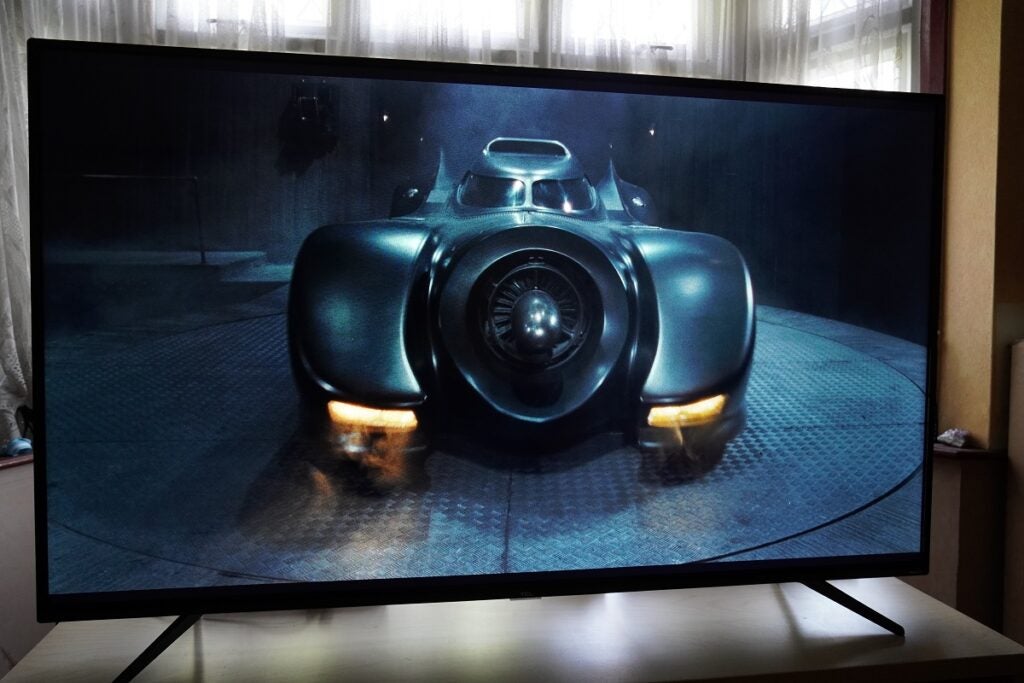
Pros: Bright images, affordable, good colour reproduction, suited to bright rooms
Cons: Contrast and black levels aren't (always) equally potent as others, suffers from backlight drain/blooming
Who makes LCD LED TVs? Everyone
LCD LED is the screen technology most will exist familiar with (or already own). These screens utilize a backlight to illuminate their pixels, of which in that location's normally a pick between total-assortment and edge-lit backlighting.
Full-array comes under the DLED imprint (which we'll expand on below). The LEDs sit down backside the screen divided into an array of 'zones'. The more zones there are, the more precise the illumination and dimming can be. This leads to meliorate black levels, and reduces backlight bleed and blooming, the latter a 'halo' that develops around bright objects in dark areas of an paradigm.
With edge lighting, the LEDs sit down at the side of the brandish, not correct behind it, and while this often means screens are aesthetically thinner than the bulkier full-array backlight, contrast and black levels aren't as well developed and viewing angles can exist poorer.
DLED stands for Direct Calorie-free Emitting Diode. It'south where Full-Assortment backlighting is derived from simply is less advanced, with fewer LEDs behind the screen. It'southward likely a brandish termed as DLED won't have local dimming i.e. control over how brilliant or dark an area of an image can be. As such, the LEDs are always 'on' and while colours tin can be bright and punchy, DLED screens without local dimming are less effective at reproducing blacks, producing a washed out appearance in dark scenes with bright elements.
OLED
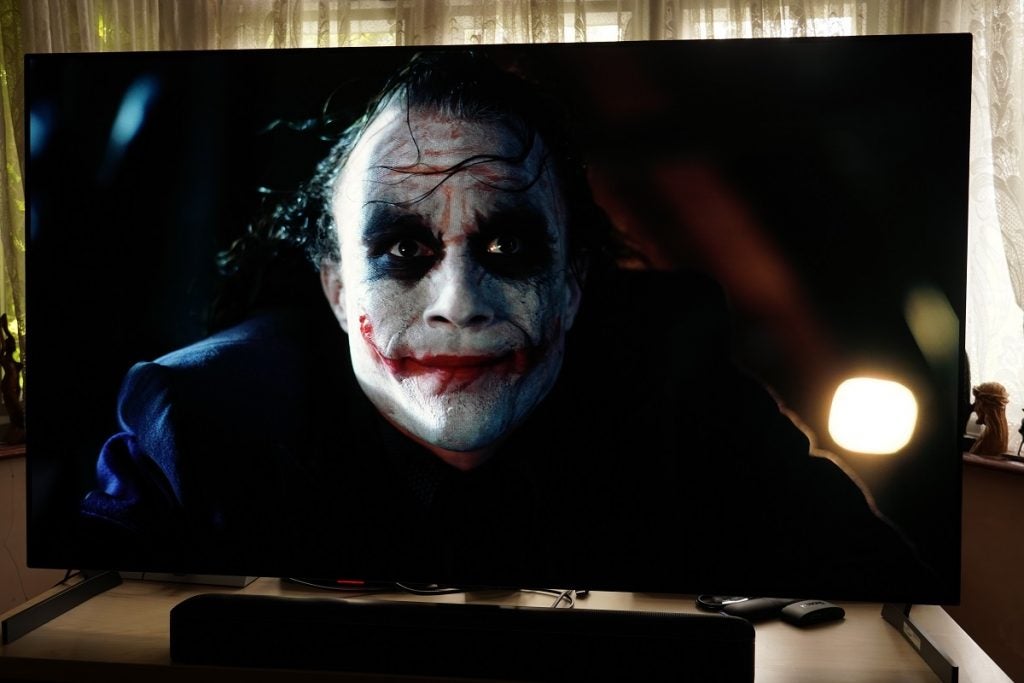
Pros: Infinite blacks, terrific contrast, wide viewing angles, fast refresh rates, thin pattern, bang-up for dimly-lit rooms
Cons: Still comparatively expensive, the potential for burn-in, not as bright as other displays, experiences more than wear over its lifespan
Who makes OLED TVs? LG, Hisense, Panasonic, Philips, Sony
OLED stands for Organic Low-cal Emitting Diode. Information technology'southward a cocky-emissive screen engineering and that ways every pixel has the ability to produce its ain lite when electricity is applied. The more electricity applied, the brighter they glow, with unlike materials used to deliver unlike colours.
Every single pixel works independently of its nearest neighbours, offering dimming abilities at a pixel level. You tin can have a pixel that's 'on' next to one that's 'off' (literally black), and that creates some of the best contrast ratios and black levels of whatever Idiot box.
It makes OLED bang-up for watching films on, and its fast refresh rates make information technology a good selection for gaming and viewing sports. The drawback is the potential for prototype retention with static images, but OLED TVs take solutions to mitigate this.
Mini-LED
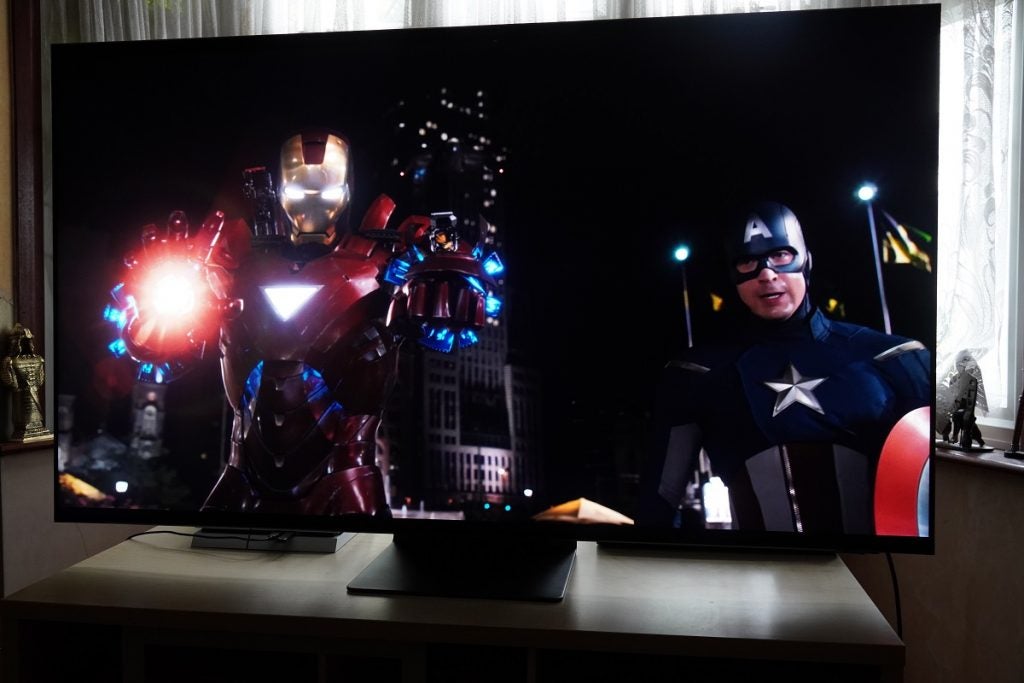
Pros: Very bright, thin displays, great for HDR, potent black levels, good in bright rooms
Cons: Still potential for blooming, more expensive than LCD LED, more than bear on at bigger sizes
Who makes Mini-LED TVs? Samsung, LG, Hisense, Philips, TCL
Mini-LED is an advancement of existing LCD LED technology, using teeny tiny versions of LEDs to emit light.
By reducing the size of the LED form, it means more can be squeezed in, allowing for up to thousands of LEDs to exist deployed depending on the screen size. Much like Spider-Human's 'with great power comes bully responsibleness', with more LEDs comes more than dimming zones, leading to greater control over how bright and nighttime an image can exist.
Add an expertise for bright images and you get spectacular HDR content with no epitome retention. In the Us, TCL has brought Mini-LED downward to affordable levels with its 6-Series TVs, but in the UK/Europe you'll still be looking to pay a premium.
MicroLED
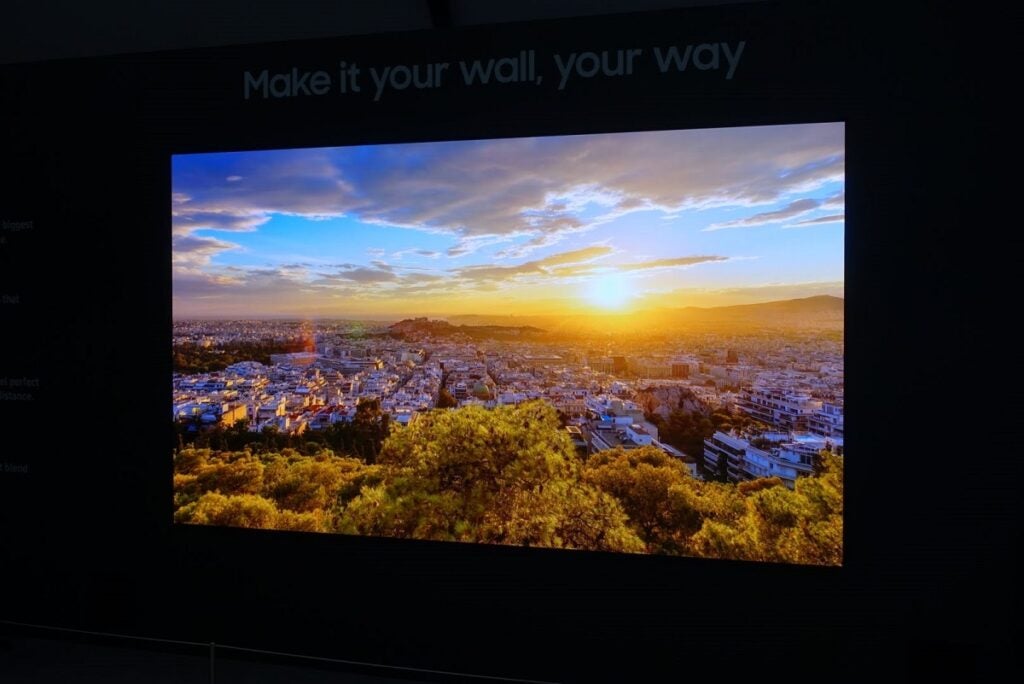
Pros: Super bright, durable, loftier colour accuracy and dissimilarity ratio, no image retention
Cons: Currently available merely in huge sizes, but footballers/oligarch can afford
Who makes MicroLED TVs? Samsung
Unlike an LCD LED or Quantum Dot Goggle box, Micro-LED combines the LCD layer and LED backlight. What that ways is that a pixel is a cluster of iii LEDs (a ruddy, greenish and bluish) to create the colours seen on screen.
Like OLED, MicroLED is self-emissive, so the calorie-free is created by the pixels themselves to produce those 'perfect' blackness levels. Effulgence tin can as well be very loftier, and in tandem with those deep blacks they create a vibrant and colourful image with a loftier contrast ratio, and – according to Samsung – retain detail in the brightest parts of an paradigm.
They're made from inorganic materials, and then a Micro-LED TV can a) last for a long fourth dimension and b) is immune from screen burn unlike TVs with organic materials (such equally OLED).
However, MicroLED is expensive to produce on a mass calibration and in smaller sizes. The smallest MicroLED screen so far is a 76-inch selection, but Samsung hasn't provided a hard date for availability.
Quantum Dot (QLED)
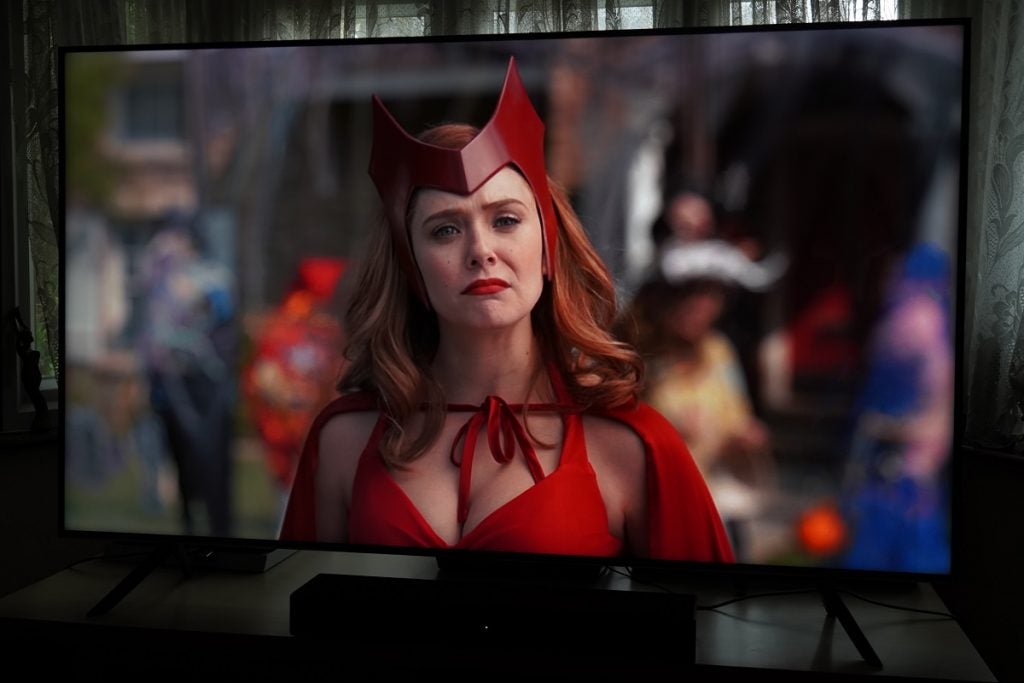
Pros: Very brilliant, wide and accurate colour range, no image retention, good in bright rooms
Cons: Black levels dependent on backlighting
Who makes Breakthrough Dot/QLED TVs? Samsung, TCL, Sky, Hisense, Sharp
QLED (Breakthrough Dot Lite-emitting Diode, forget about the missing 'D') is a fancier take on LCD TVs made popular past Samsung. Later on some to-ing and fro-ing on what information technology ways, it at present refers to a TV that combines traditional LCD technology with Quantum Dots.
What are Quantum Dots we hear you enquire? They are filters that utilise an array of tiny dots of slightly different sizes to produce dissimilar wavelengths (and therefore colours) when light is applied. As each dot is focused on one colour, Quantum Dots tin can produce more than precise colours, as well as a wider range of colours, and when you cistron in its inherent ability to cope with loftier brightness, y'all get spectacularly colourful, bright and varied images.
Although not every Quantum Dot Boob tube is equal. Match a Breakthrough Dot Television receiver with a full array backlight and y'all get more precise black levels and brightness, but you'll likewise have to pay more than. Edge-lit Breakthrough Dot TVs boast a colourful image, but without a full-array dimming system, black levels and contrast tin suffer.
Other display technologies
IPS and VA are both screen technologies and you'll find them in LCD LED TVs, too every bit Quantum Dot and Mini-LED. IPS stands for In-Aeroplane Switching and offers consistent, accurate colours at wide viewing angles, every bit well every bit quick response times.
VA stands for Vertical Alignment and while viewing angles are poorer compared to IPS, contrast and blackness levels are improve. If yous like watching movies in a night room, VA is the panel to plump for.
Of the 2, VA is more than pop amongst Boob tube manufacturers due to its contrast and black levels, but some still use IPS, Panasonic for some of their border-lit displays, LG with their QNED Mini-LEDs and Sony in their more affordable LED TVs.
TV manufacturers also develop their own technologies on peak of IPS and VA panels (such as Samsung's Viewing angle applied science on its VA displays) but yous often have to pay a premium for that.
In short, with LCD LED, for the best possible motion picture quality, a Television set with a VA panel and full-array local dimming is your all-time bet. If you're aren't swayed by best image quality, or are purchasing a smaller screen, a standard DLED or border-lit display will likely conform.
You might like…
Source: https://www.trustedreviews.com/news/tv-buying-guide-4175675
Posted by: keithberch1963.blogspot.com


0 Response to "TV buying guide: Which TV display is best for you?"
Post a Comment